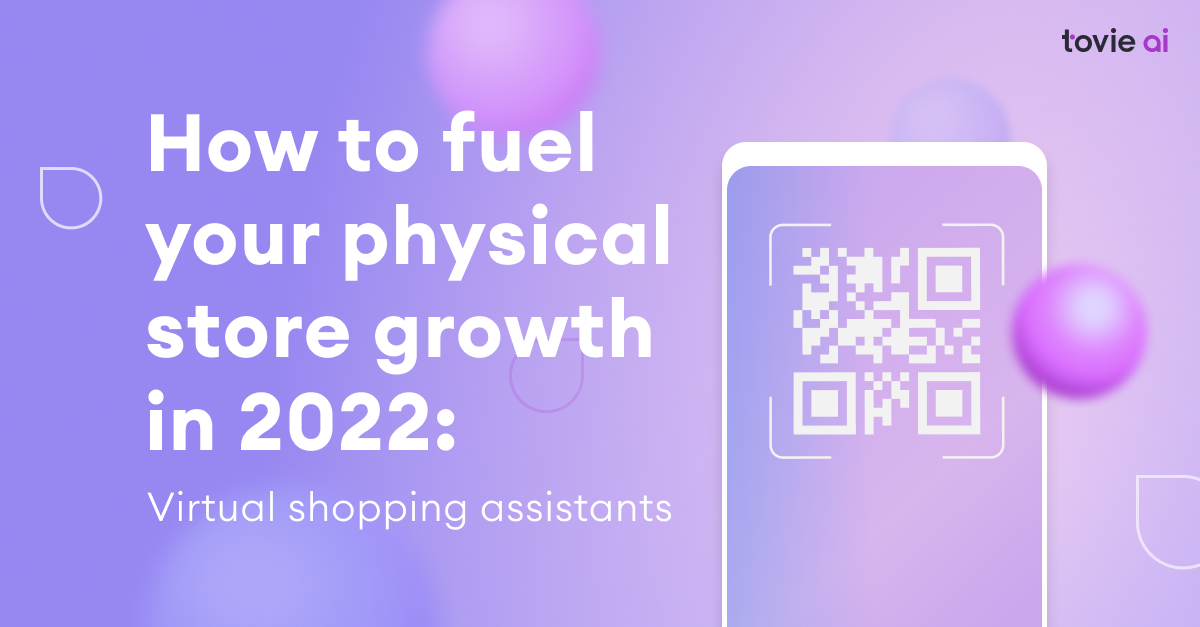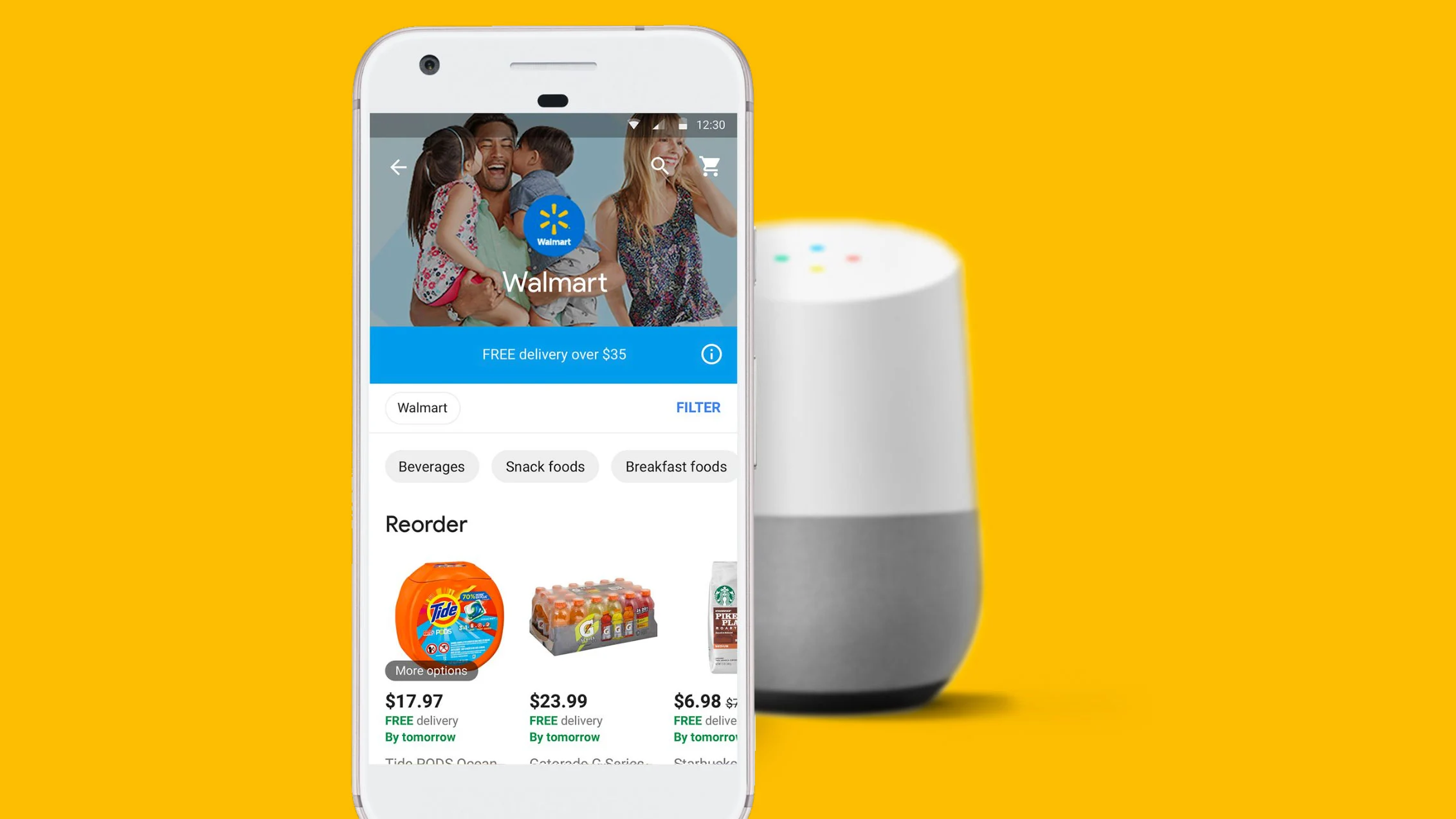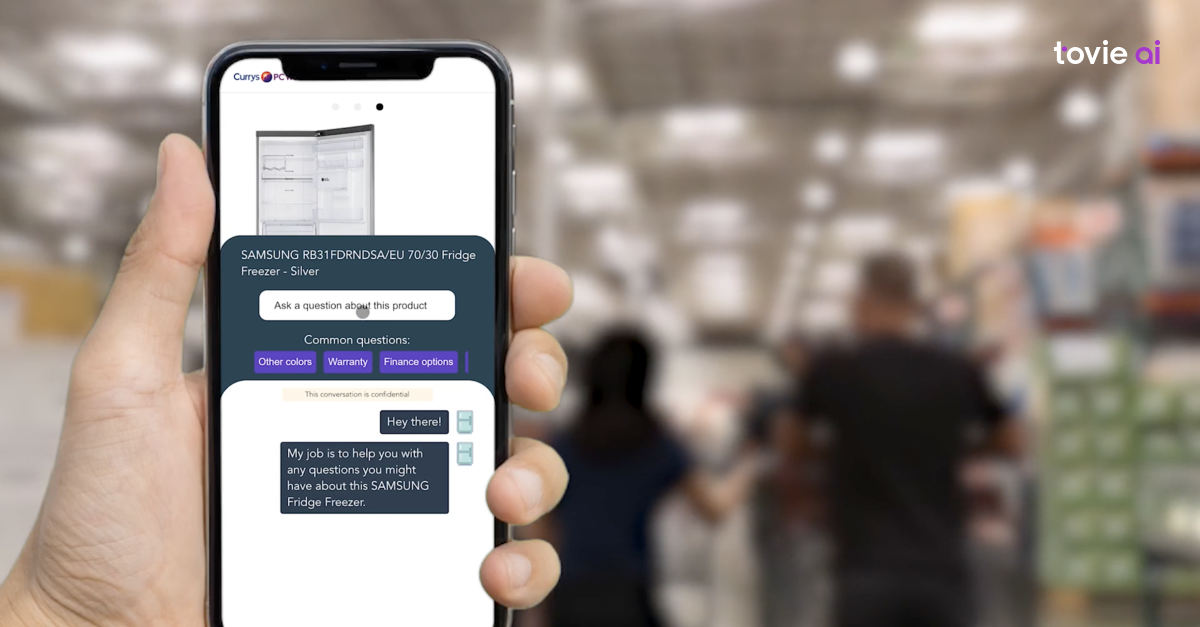How AI is Transforming Physical Retail in 2022: Virtual Shopping Assistants
June 21, 2022
4 min read

Today, the main challenge for physical retail is to attract and retain customers in real time. With the onset of the pandemic, everything moved online and people are used to making their purchases via virtual shopping assistants by saying “Hey Google, add milk to cart”. As well as using online shops with personalised recommendations and asking chatbots basic questions.
Retailers and shoppers may not realise how much we’ve all come to rely on virtual assistants when shopping online. Most customers now value ease of navigation and seamless shopping experience like never before. That’s why now shoppers are looking for physical retail stores that will solve their problems as quickly and completely as they do online.
This is where virtual shopping assistants in the form of chatbots, voice bots and voice search technology come in to help shoppers at brick-and-mortar locations. A study by Global Market Insight found that the retail sector is likely to increase its investment in AI to $8bn by 2024. Conversational shopping is evolving at a rapid pace and we clearly see the need to adapt to this change and bring new AI tools into stores.
What does a shopping assistant in retail look like
Some supermarkets provide a voice-activated shopping experience for customers. Walmart shoppers in the USA can ask Google Assistant to add certain items to their shopping carts and learn about their shopping habits in an app.

Google has similar programmes with two other supermarket giants, US-based Target and France-based Carrefour. Amazon provides voice-activated shopper assistance services in the UK for online retailer Ocado.
Today, more than a billion people interact with businesses using text or voice conversation tools. Total conversational commerce sales are expected to grow five-fold to nearly $300bn by 2025, with chatbots accounting for half of that.
How AI changes customer experience in physical retail
AI includes deep learning, sophisticated natural language processing, voice recognition, and cognitive computing-in. But the main advantage, beyond simplicity, comfort, and the ability to shop anywhere and anytime, is the ability to make the retail experience for the shopper much more personalised.
Typically, a virtual shopping assistant is a digital version of a store associate in real-time. It provides the same level of service to increase conversions and customer satisfaction. But in fact, virtual shopping assistants perform a huge range of tasks for retail businesses.
- Attract more customers by providing information in real-time without waiting for staff
- Reduce long-term operational costs such as staff spending and onboarding
- Increase revenue from cross-selling and additional sales
- Create a unified commercial in-store shopping experience
- Collect data from customers for future marketing activities

Moreover, a virtual shop assistant is a good addition to the human staff. COVID-19 accelerated the importance of contactless action, which is hard to avoid in retail stores. In fact, AI-powered shop assistants are the perfect substitute for live consultations, protecting both your staff and your customers. 65% of retail customers admit they prefer using chatbots to ask questions.
How can a virtual shop assistant be used
Answer customers’ questions
Customers usually ask repetitive questions about product features, functions or delivery. So if a shopping assistant bot is good at helping them with these questions, the likelihood that shoppers will end up buying something increases. What’s more, shop assistants are ready to answer any question quickly and accurately, while store associates may be busy or may not know the answer at the moment.
Make product recommendations
AI shopping assistants can do more than just answer basic questions. They can also generate additional products for the specific needs of a customer outlined in the chat. This can greatly improve the customer experience.
For example, Shop Assistant by Tovie AI can be connected into your stock system. The chatbot can then offer customers a more advanced version of the products they need.
Complete the check-out process
Customer service expectations are higher than ever before, which means more responsibilities for the role of store associate. Once a customer has chosen their dream product, a virtual shopping assistant helps them complete the check-out process. A digital shopping assistant can generate QR codes that let customers check out wherever they are in store. While sales staff can focus on more complex tasks.
More about Shop Assistant by Tovie AI
Tovie AI helps to enhance customer self-service in stores with AI-powered chat & voice bots. The Shop Assistant solution is optimised for retailers with physical stores and complex products.
Our virtual shopping assistant will help you create an outstanding shopping experience that boosts your physical retail growth by combining all the features you need in one convenient platform.
Sign up for Tovie AI newsletter
Get the latest posts and fresh analytics delivered straight to your inbox



